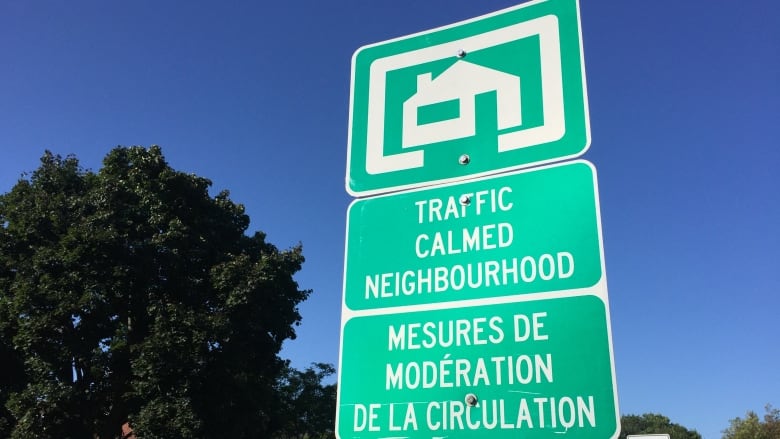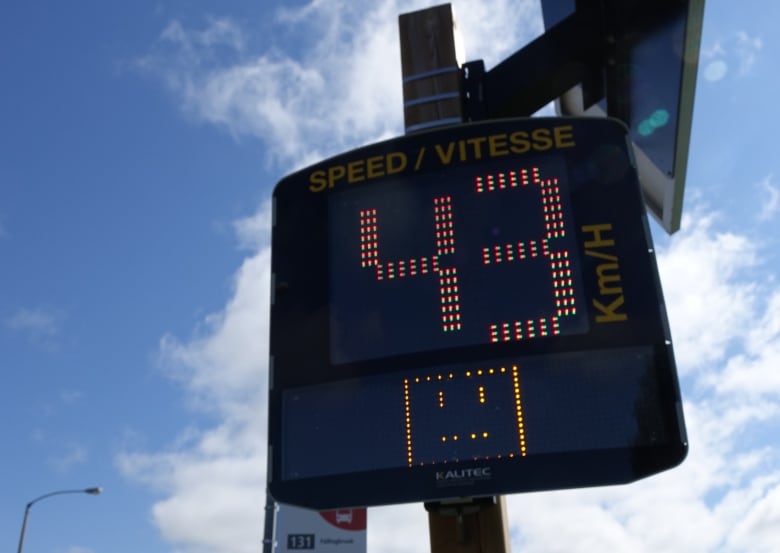Traffic-calming strategy will zero in on streets where simple measures have maximum impact

The City of Ottawa is streamlining its speed-calming efforts to target streets where simple solutions will go the furthest toward reducing speeding. (Kate Porter/CBC)
On Wednesday, the city’s transportation committee voted to revamp the existing program to focus instead on simple changes to key streets that will have a bigger impact on speeding.
Currently, there’s a lengthy backlog of neighbourhoods waiting for the comprehensive traffic studies that normally have to happen before improvements are made.
Eighty-nine neighbourhoods sit on the ranked waiting list, with another 33 waiting just to get into the queue.
No extra money
The neighbourhood traffic studies will continue, but the city will now undertake separate studies of individual collector streets, especially those with schools or parks, where simple changes could go a long way.
Councillors also approved new guidelines about which methods suit which types of roads: for instance, speed humps shouldn’t go on busy bus routes or roads that are often used by ambulances and fire trucks.

Each Ottawa city councillor gets $50,000 per year toward temporary traffic-calming measures like this speed board. (Kate Porter/CBC)
Councillors often say speeding and traffic safety are the top concerns for residents, but the 2019 budget sets aside just $745,000 for permanent traffic calming.
“There is a limited amount of money available to do all things in Ottawa, so this is the amount of funding that council has budgeted for this type of program,” said Coun. Stephen Blais, who chairs the transportation committee.
Temporary traffic tools
The city also has a separate program to pay for cheaper, temporary fixes that can slow speeders.
Each councillor will receive $50,000 this year to pay for the flexible stakes, speed boards, painted markings and speed limit signs in their wards. That’s up $10,000 from the last term of council, an increase that the mayor promised last election.
It’s a popular program, and residents often ask their councillors for the fixes in a bid slow drivers cutting through residential areas. Councillors regularly drain those accounts as they try to keep up with demand.
This year, speed humps and some medians are being added to the list of measures councillors can spend their money on, but Coun. Keith Egli noted those are actually permanent fixes.
They’re also costly and would quickly eat up the annual allocations, Coun. Diane Deans noted.
Please remember to slow down on residential roads. Another new Traffic Calming initiative used around #KanataSouth #Silhouettes pic.twitter.com/2mHvTadLCJ
— Allan Hubley (@AllanHubley_23) May 29, 2018
Coun. Allan Hubley said the temporary tools seem to lose their effect on speeders after a while.
He asked staff to keep offering new methods, such as experimenting with the cut-outs that look like children playing by the roadside that he said he saw last year in his ward, or roads painted to look like they have three-dimensional speed humps.
Source: CBC News
